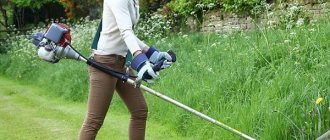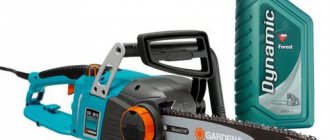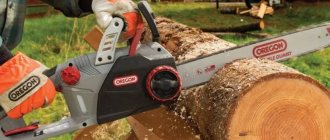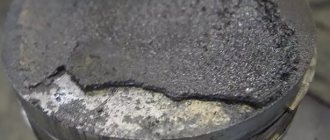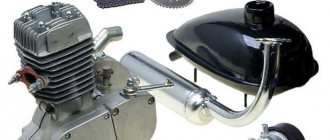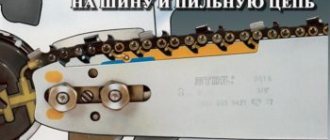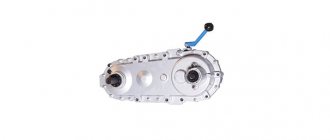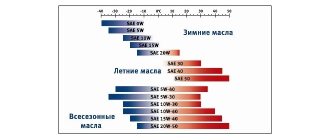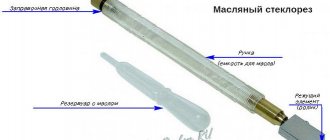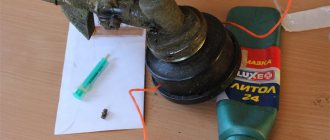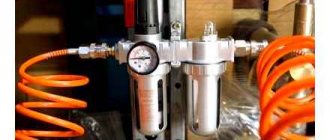How to add oil?
Oil is poured into a stationary lubricator using a funnel through a hole located on the upper plane of the equipment. Usually, the hole is closed with a plug for an internal hexagon. If the lubricator does not have a special hole, then the oil is poured into the removed test tube and then installed back.
Oil into a small lubricator through a hole on the body, which is unscrewed with either a Phillips or flat-head screwdriver. The oil is added using a small plastic oil can. In order to keep the oil level in the lubricator under control. There are two marks on its body - the highest and lowest volume levels.
Why do you need a lubricator?
Compressed air is used to operate pneumatic tools. which is used in almost all production and repair areas. But the air leaving the compressor equipment is not ready for use without proper preparation. Condensation, oil and other contaminants in compressed air can cause significant harm to the instrument, significantly reducing its service life. Therefore, before feeding the air into the tool, it is necessary to clean it and add lubricant by installing a moisture separator and lubricator or a modular group in the pneumatic line, which provides comprehensive preparation.
The preparation of compressed air is described in more detail in a separate article.
In most air tools. for example, in pneumatic impact wrenches, pneumatic ratchets, pneumatic chisels, pneumatic screwdrivers, etc., compressed air is used to start the drive (motor). Therefore, in addition to air cleaning, a special oil must enter the air flow, which provides lubrication of rubbing internal devices.
General instructions for impact wrenches
These instructions must be read by the operator before using the air impact wrench. Be accessible and understandable to personnel operating the tool, maintenance personnel (service) and safety inspectors.
1. PURPOSE
The pneumatic impact wrench is designed for tightening and unscrewing threaded connections when assembling metal structures, machine tools, bridges and tunnels, etc. where high performance and connection reliability are required. The accuracy of the tightening torque when operating a pneumatic impact wrench largely depends on the degree of wear of the impact wrench, the quality of the compressed air and the correct construction of the pneumatic network, and on the qualifications of the operator.
2. HEALTH AND SAFETY REQUIREMENTS
Types and where to install
In the first case, the lubricator is installed permanently in the air treatment system after the pressure regulator or after the moisture separator with a regulator. The entire system is installed as close to the instrument as possible. The length of the hose between the lubricator and pneumatic equipment should not exceed 10 meters. It is worth keeping in mind that such a lubricator should be located above the instrument. since the oil aerosol does not move upward well.
A multi-point lubricator can serve several posts with inventory. Lubricators can have different inch diameters of the inlet/outlet openings, as well as oil tubes of different volumes.
The throughput depends on the diameter of the inlet/outlet, so the lubricator should be selected based on the amount of air consumed by the equipment in order to ensure the highest efficiency for all operators. Most models have a special screw that allows you to adjust the intensity of oil supply.
In the second case, the lubricator is installed immediately after the tool handle and provides lubricant to the only tool. In addition, such a lubricator can be installed in a pneumatic line together with the main model to ensure greater efficiency.
Principle of operation
This tool is a metal reservoir that must be placed on the inlet part of the pneumatic equipment. It is fixed with a thread. It is important to remember that the lubricator is installed after the filter to clean the air, otherwise oil particles will be retained in the filter. Thus, compressed purified air from the filter passes through it, where it is enriched with lubricant and enters directly into the tool. It is important that the length of the hose between the lubricator and the pneumatic tool is less than 10 meters. Otherwise, oil particles will not reach the equipment itself, but will be smeared on the walls of the hose. If conditions do not allow the use of hoses shorter than 10 meters, it is worth installing a linear type, which is placed immediately in front of the tool.
How to replace lubricator oil
How to increase the service life of pneumatic tools?
- Make sure there is no moisture in the air! To do this, it is enough to install a special device - a filter-moisture separator, which will ensure the required air quality!
- Supply only clean, dry air with sufficient air tool oil into the tool! To do this, just install a special device - an oil sprayer (lubricator) and adjust the oil dosage!
- Make sure that the dosage of the amount of oil supplied to the tool is adjusted correctly!
- Work at the minimum sufficient compressed air pressure!
- Use the tool only at ambient temperatures above 5°C!
- Take care of your instrument!
Is it possible to ensure uninterrupted operation of a nailing tool during the cold season in an unheated room?
No, it is impossible to ensure uninterrupted operation of the nailing tool in the cold season in an unheated room! Since this leads to a decrease in the elasticity of rubber seals, thickening of the lubricant, which subsequently leads to air leaks and loss of power of the tool.
How to reduce condensation in a pneumatic system?
- The stationary compressed air piping must be laid in such a way that it slopes with its highest point towards the compressor. All descents of a stationary compressed air pipeline to workplaces must be equipped at the lowest points with valves to remove condensate. The connection point for pneumatic tools on a stationary pipeline must be above the condensate drain valve.
- The simplest and cheapest way to reduce condensation in a pneumatic system is to install a filter-dryer separator. But this device allows you to remove, albeit a large part of the moisture from compressed air.
- The ideal way to remove moisture from the air is to install a refrigeration or desiccant dehumidifier. These devices minimize moisture in compressed air.
How to increase the service life of a piston compressor?
- Be sure to read the instruction manual before using the compressor!
- Install the compressor in a separate, dust-free room where good ventilation must be ensured! Make sure that the ambient temperature is maintained between 1°C and 40°C. When the ambient air temperature is above 30°C, it is recommended to take air from outside the room or take special measures to reduce the temperature of the air surrounding the compressor! DO NOT use the compressor at ambient temperatures below 0°C!
- Connecting the compressor to the electrical network must be carried out by specially trained personnel. When connecting compressor units to a 380V electrical network, the phase sequence is of particular importance, as this determines the direction of rotation, which must correspond to the arrow on the motor housing, belt drive protection and/or piston unit pulley. Even a short amount of time running the engine in reverse can cause compressor failure. DO NOT connect the compressor to a household power supply or via extension cords if the voltage drop between the power source and the load is more than 5% of the rated value!
- Monitor the oil level in the compressor crankcase! Check the oil level in the piston block crankcase using the oil indicator - it should be within the red mark of the sight glass. If necessary, add compressor oil recommended in the instructions to the medium level. Do not allow oil to leak from connections or get oil on the outer surfaces of the compressor! IMPORTANT! oil with a viscosity of 100 mm2/s can be filled into compressor equipment This oil is specially designed for compressor units, is optimal for the compressor operating mode and is safe if all safety requirements are met.
- Do not overload the compressor! The operating mode of the piston compressor is intermittent. For every 10 minutes, the compressor should work for a total of no more than 6 minutes and rest for at least 4 minutes! Continuous operation of the compressor is allowed for up to 15 minutes, but not more than once within 2 hours!
- Drain the condensate from the receiver daily! Make sure that no condensation remains in the receiver - it causes corrosion, which may result in premature failure of the receiver!
- Take care of the compressor! Check the tightness of the air duct connections daily and clean the compressor of dirt. Only cotton or linen rags should be used as cleaning material! Clean all external surfaces of the piston block and motor monthly to improve cooling.
READ How much oil does a trimmer need?
What can be used to lubricate air tools?
Only specialized pneumatic oil with a viscosity of 32 or 46 mm2/s can be supplied to pneumatic tools. This oil is not absorbed by rubber products and protects tool parts well from corrosion. DO NOT USE MACHINE OIL UNDER ANY CASE! Engine and transmission oils have a detrimental effect on the rubber seals in the tool!
pneumatic tools be lubricated ?
The easiest way to lubricate is to place 2-5 drops of special oil into the inlet fitting of the tool every shift. But sometimes an employee forgets to do this. In this case, it is necessary to install a mini lubricator on the tool or use an air preparation unit. Use only oil intended for pneumatic tools, which has special additives; the use of industrial brands of oils leads to intense wear of the rubber parts of the tool.
Is it possible to work with a blocked (missing) release safety device on a pneumatic tool?
Operating a pneumatic tool equipped with a release safety device with the safety lock locked is prohibited! This is due not only to the safety of the worker and others, but also to the durability of the tool. When the trigger safety device is locked, descent is possible without contact of the tool with the material being processed (into the air), while the firing pin of the tool, having high kinetic energy of the shot, without encountering the resistance of the bracket when hammering, tends to break away from the piston, which abruptly stops (bounces) from the shock absorber. This often happens, especially in instruments with a substantial mass of the striker (frames, nails).
It's easy and interesting to communicate here. Join us!
Lubricator oil is called lubricator oil or oil for pneumatic systems. In the most extreme cases, you can use a “spindle”. It's better than nothing at all. Veretyonka is the purest mineral oil, with virtually no additives - oil for sewing machines, and is also used in hydraulic systems. Synthetics and motor oils in pneumatics are prohibited (motor oils contain caustic additives). But this is a last resort; it is better to look for a lubricant.
Even if you fill with the MOST correct lubricant, the mixture of two lubricants will foam!! ! You need to add the one that was originally filled.
FESTO OFSW-32 ARAL Vitam GF 32 BP Energol HLP 32 Esso Nuto H 32 Mobil DTE 24 Shell Tellus Oil DO 32
or similar to these, but with a viscosity of 32 mm/s (=cSt) at 40 °C
And don’t worry about the rubber - it’s always oil and petrol resistant when used in such devices.
There is a compressor for 10 atmospheres. There is a set of pneumatic tools with max 6 Bar. There is nothing else - I would like to connect the instrument to a compressor this weekend and work. Hence the question - what do I need to run and buy now to connect this thing?
- The hose is clear. The rest is not clear - I have never seen it. So I think that it is necessary to insert some kind of pressure regulator in front of the tool in order to supply the tool with not 10 but 6 atm. Then, perhaps, you need a filter? (Are they combined with a pressure regulator?) And most importantly, does the tool need an oil sprayer? I would be grateful if anyone could tell me what is needed for such a simple pneumatic line.
Yes, you need a gearbox, it can be combined with a filter, a lubricator (oil sprayer) is advisable if you are going to work a lot and for a long time with the tool. Otherwise, you will have to lubricate it manually every day.
There is a lot of useful air preparation for mowing lines: www.camozzi.ru
Lubrication and maintenance of pneumatic tools. Lubricator. What oil to use
Doc, thank you. What kind of oil is needed for lubrication?
A reducer is not necessary, if you have an adjustable safety valve on the compressor - you can set it to 6 atm. for bleeding.
A lubricator is a must - without it, the tool will work normally for no more than 15 minutes.
What kind of oil is needed for lubrication? I-20 is quite suitable for the instrument, and compressor type for the compressor.
2Bioside You forgot to mention a very important parameter of your compressor - air flow per unit of time. This parameter will sharply cut off a large number of pneumatic tools.
2Bioside If you are, then OBI and Leroy sell oil for both compressors and tools. It costs about 250-300 rubles/l. It lasts a very long time.
What kind of oil is needed for lubrication? [/QUOTE] Special oil for “pneumatic tools”. There is no need to use a compressor, or a spindle, unless, of course, you value your instrument. I can’t say anything about the I-20, I don’t know its specifications. I install industrial lines, there are a lot of Camozzi and Festo pneumatics (yes, Festool is one of the divisions of Festo and produces power tools), but the requirements for air preparation are the same and for pneumatic tools and industrial pneumatics. Read on their websites. But the companies themselves do not sell oil; they do not have a license to sell fuel and lubricants. Here are Camozzi's recommendations » I can say that almost all of this oil is sold in 20 and 200 liter containers. Although I saw it once, in a liter bottle, just in a company that sells pneumatic tools, and then from under the counter (apparently there was no license either)
How and with what frequency should pneumatic tools be lubricated?
It is best to regularly, before each work shift, instill 2-5 drops of special oil into the inlet fitting of the tool. This is the easiest way to maintain air tools in good condition.
However, there is another way - install a mini-lubricator or air preparation unit on the device. For pneumatic tools, it is recommended to use special oil with special additives, because any other industrial oils have a negative effect on the rubber parts of the tool.
In addition to oil sprayers, there are other systems for lubricating compressed air with oil mist. The oil mist thus obtained has a high degree of homogeneity with a particle size of 0.3-2 µm. This significantly reduces oil consumption and also supplies lubricated air to devices located at a distance of up to 500 m.
Mobil Almo oil is a highly purified mineral oil based on paraffin and contains emulsifiers, anti-wear, adhesive and anti-corrosion additives. The product is designed to protect against aging and corrosion in hammer drills and other pneumatic tools.
Meets all tests and specifications developed for oils used in severe mining applications. It is approved by Ingersoll Rand Company, Joy Manufacturing Company and other companies.
For Camozzi industrial pneumatics, lubrication is not necessary, because... During manufacturing, a grease is added that is designed for the entire service life of the product. But if you do not use oil-moisture separator filters, then this substance is washed out over time by moisture in the air. If additional lubricant (lubrication) is already supplied to the system, then its supply cannot be stopped, because this lubricant also washes away the grease. The maximum amount of oil supply is 1 drop per minute for machines with medium speed. Recommended oil viscosity is 32 cSt at 40 degrees. Celsius.
The use of oil sprayers (lubricators) is necessary in cases where mechanisms are used in extreme conditions with a high frequency of operation - more than 40 times per minute, or with a high speed of movement - more than 1 m/s.
How to choose a lubricator for pneumatic tools?
Such designs should be purchased based on the characteristics of operation and the tasks to be solved. Key features to pay attention to:
- Throughput: the lubricator is selected for equipment that has the appropriate power, and this parameter is important for the most complete provision of air flow with oil particles. If the throughput is low, the pneumatic tool will work less efficiently.
- Working pressure, which determines whether the device can cope with the load.
- Case materials. This product must be made of high-quality steel: such devices are characterized by increased reliability, durability and minimal maintenance costs.
- Thread size and location: if it does not match, the lubricator simply cannot be used in conjunction with the selected equipment.
READ How much oil does a trimmer need?
If you have doubts when making a choice, it is better to consult with a specialist who can advise which device is most suitable for specific pneumatic equipment. After purchasing a lubricator, it is important to use the required brand of oil, which has the appropriate parameters (viscosity, alkalinity, etc.). It is necessary to check that water does not get inside, which causes corrosion of the housing, and periodically monitor the oil level.
Nailer care and lubrication
Like any professional, the mounting gun is manufactured taking into account the high functional load. Since this equipment is quite reliable, then, in principle, all care consists of observing generally accepted measures and standards for operation and cleaning.
They are quite simple and consist of removing contaminants that periodically accumulate on working parts and careful handling. The tool must not be thrown. You need to make sure that no water gets into it. In short, mechanical deformation and damage must be avoided.
Everything said above can be attributed to any devices. As for the pneumatic nailer, it is also necessary to add that this type of tool needs to be lubricated. This is done according to the manufacturer's instructions. Most often, this procedure involves placing a few (2-3) drops of oil into the connecting fitting before starting work. This manipulation must be repeated in the middle of the working day if the tool is actively used.
If there is a long break in work, it is recommended to drop the same 3 drops into the nailer and take several shots to distribute the oil evenly. This will protect the inner surface from corrosion.
How to add oil
Before adding lubricant, you must disconnect the tool from the mowing line and make sure that there is no residual pressure in its working parts. To do this, press the power button several times and allow the air to escape from the tool. Next, you need to open the lid and carefully, using a funnel, add lubricant from a small container. It is strictly not recommended to add silt from large canisters; spilling some of the oil and subsequent cleanup is almost inevitable. Many equipment and lubricant manufacturers include special measuring vessels with a spout in the delivery package. They are made of transparent plastic and allow you to measure the required amount at one time and carefully and without loss pour it into the container.
Sometimes novice users ask questions: is it possible to lubricate pneumatic tools without a portable lubricator? The answer is simple: only if a stationary lubricator is used.
Comments 50
We use Remeza, in fact, in my understanding, you can use any mineral water)
I pour transmission fluid into both the impact wrench and the compressor itself.
Tell me which one is better to fill in the compressor, preferably the full name or article number))
Anything will do, but there is But where the compressor is used, what loads are on it, in the cold, such conditions, if the usual one is small, then any
The main thing is that it would be, and it’s simpler here - if you overfill it, he’ll spit it out himself.
Should you change brushes (in power tools)? Unwind all kinds of extension cords.
1) A pneumatic impact wrench is much more compact than an electric one (and for working on a car, every millimeter of the tool’s dimensions is important). 2) A pneumatic impact wrench works much “softer” than an electric one (it doesn’t break hardware and spoil threads as much). 3) In a modern repair shop there are usually several pneumatic tools (blow gun, pneumatic ratchet, pneumatic chisel, inflation gun, grinder, drill, sander...) everything from a pneumatic mowing line, everything on quick releases. Imagine if there were a bunch of power tools, each with its own cable, its own motor. 4) Pneumatic tools are not afraid of water (sometimes they have to work in very wet places)).
Now there is already a line of electric tools that have one cable with a connector for all types of accessories
Pneumatic wins in price, because it does not use complex mechanisms, expensive alloys and pneumatic repairs are cheaper
1) A pneumatic impact wrench is much more compact than an electric one (and for working on a car, every millimeter of the tool’s dimensions is important). 2) A pneumatic impact wrench works much “softer” than an electric one (it doesn’t break hardware and spoil threads as much). 3) In a modern repair shop there are usually several pneumatic tools (blow gun, pneumatic ratchet, pneumatic chisel, inflation gun, grinder, drill, sander...) everything from a pneumatic mowing line, everything on quick releases. Imagine if there were a bunch of power tools, each with its own cable, its own motor. 4) Pneumatic tools are not afraid of water (sometimes they have to work in very wet places)).
Well, the most important aspect for me is that you can accidentally pinch the wire and get a shock
Contrary to popular belief, lubrication of pneumatic devices is also necessary. Lubricator oil for pneumatic tools differs from generally accepted standards due to the specific application. The liquid is applied using a dust method, which eliminates the use of engine and transmission compounds. Our editors have collected information about the types of mixtures and their areas of application.
Manufacturers
Many companies produce oils and lubricating compounds for lubricators used in industrial equipment.
SKF
SKF is one of the leading manufacturers of lubricants and lubricants for refilling equipment. The company offers a wide selection of lubricants and substances intended for equipment components for a variety of purposes, which can be refilled with lubricators.
Main types of lubricants:
- LGMT2 – multi-purpose;
- LGHP2 – high temperature;
- LGET2 – for extremely high temperatures;
- LGLT2 – low temperature;
- LGEP2 – for maximum loads;
- LGFP2 – for the food industry;
- LGGB2 – biodegradable substances.
Using information about the rotation speed of mechanisms, temperature, load conditions and other parameters, you can select the best option for specific equipment.
Efele
Efele materials are specially developed for the maintenance of chain drives. All types of substances are divided into 3 groups: food grade, chain lubricants, and chain oils with graphite.
Advantages:
- resistance to low temperatures;
- heat resistance;
- performance in wet environments;
- high anti-corrosion performance;
- food grade NSF H1;
- high adhesion – the substance remains on the lubricated surface for a long time;
- resistance to water;
- long period of operation;
- low volatility even at high temperatures;
- no solid deposits.
The lubricants are also suitable for automatic processing systems, including lubricators. Considering the characteristics, Efele products can be used in almost any industrial equipment.
NTN-SNR
The materials of this brand have high temperature and performance characteristics, excellent adhesion, structural stability and resistance to washout, which provides the treated components with protection and a long service life. The stability, heat resistance and water resistance of materials is achieved due to the organic components included in their composition, which allows the use of lubricants in a wide range of equipment.
The main advantages of NTN-SNR lubricants:
- resistance to temperatures up to 160ºС;
- oxidation resistance;
- protection against wear and corrosion;
- excellent water resistance.
Unlike standard substances from other manufacturers, SNR formulations use high-quality materials that provide the mixtures with good performance characteristics.
What kind of oil to fill
Sometimes when purchasing lubricant lubricant there is a temptation to save money. Purchasing cheap oils of obscure origin from little-known manufacturers seems like savings only at first glance. Such a replacement will inevitably lead to disruptions in the operation of the oil evaporator, uneven saturation of the air flow with lubricant, deterioration of the lubrication conditions of the pneumatic tool, a decrease in its service life and failure.
You need to use exactly the oil that is recommended in the instructions for the tool, or oil from the list of analogues approved by the manufacturer for use.
Separately, it is necessary to ensure the cleanliness of the lubricant, the absence of chemical contaminants and mechanical inclusions. Such “additives” will damage the tool even faster.
Advantages of lubricators
The use of such mechanisms is a mandatory requirement for the rational and efficient operation of pneumatic tools. The use of lubricators has many advantages:
- Lubricant in the form of oil is supplied to the structure automatically, which significantly reduces the cost of effort and time for servicing the tool.
- Oil supply significantly reduces wear rates: lubricants reduce friction of key equipment elements and make productivity much higher.
- A lubricator for pneumatic tools can significantly reduce the risk of unplanned downtime that can occur due to equipment breakdown.
- Modern devices are compact and can be installed in the most inaccessible places, while the installation angle also varies.
- The use of multi-point lubricators makes it possible to lubricate up to 8 points simultaneously.
How to replace lubricator oil
The presented list of liquids is not a standard. Lubricating oil for pneumatic tools is selected based on the user’s personal preferences and factory recommendations. In this case, it is necessary to pay attention to the viscosity, physical characteristics and biodegradability of the formula.
Compressed air is used to operate pneumatic tools. which is used in many production and repair areas. But the air leaving the compressor equipment is not ready for use without proper preparation. Condensation, oil and other contaminants in compressed air can cause significant damage to the instrument, significantly reducing its service life. Therefore, before feeding the air into the tool, it is necessary to clean it and add lubricant by installing a moisture separator and lubricator or a modular group in the pneumatic line, which provides comprehensive preparation.
READ How to mix gasoline with chainsaw oil
More details about the preparation of compressed air are described in a separate article.
In most air tools. for example, in pneumatic impact wrenches, pneumatic ratchets, pneumatic chisels, pneumatic screwdrivers and so on, compressed air is used to start the drive (motor). Therefore, in addition to air purification, a special oil must be supplied to the air flow, which provides lubrication of the rubbing internal mechanisms.
Latest Visitors 0 users online
No registered user is viewing this page
Choosing oil for pneumatic tools
Kinematic viscosity at 40°C [mm 2 /s = cSt (cSt)]
We are only interested in 2 values from this table: 46 and 100. It is these oil viscosity values that are used when servicing pneumatic tools and compressors for them. To lubricate the tool, oil with a viscosity of 46 (ISO 46) is used, and in compressors with an oil system, oil with a viscosity of 100 (ISO 100) is used.
Oil for pneumatic tools. lubricator oil
Do not mix oils or use a different type of oil. If you use compressor oil in pneumatic tools, due to its higher viscosity, it will make it difficult for the tool to operate, causing rapid wear of moving parts. Conversely, if you pour oil for pneumatic tools into a compressor, it will not sufficiently lubricate the piston part.
Viscosity is the main criterion in choosing oil for pneumatic tools . All other differences are not significant. It is also not so important which oil manufacturer you will use, since the production of technical oils that comply with the ISO 3448 standard does not contain significant differences in technology.
We recommend Mannol oil. Our 10 years of experience working with these oils suggests that they are excellent for lubricating pneumatic tools and servicing compressors. But you can use any other oil of your choice.
ATTENTION TO THOSE WHO WANT TO REGISTER ON THE FORUM. Problem activating your account? Write to (ignel(woof), ICQ 50389649), indicating your nickname and the address from which you registered. Don’t forget to look at the forum rules. Ignorance of the rules does not exempt you from responsibility! Don't forget to look at the TB section. Knowing the rules can save lives. Have questions about using the forum? Look for answers in the FAQ. There's a lot of useful stuff there. Looking for interesting materials? Guide to master classes from our forum members
- Artisan »
- Tools, fixtures and workshop »
- Pneumatic tools (Moderator: Mechanik) »
- Topic: Lubrication of pneumatic tools (nailers, hairpins, etc.)
Why do you need oil for pneumatic tools?
Oil plays an important role in the longevity of the tool. Pneumatic tools operate on the energy of compressed air, so various sealing elements are used in the design. These elements are made of special rubber designed to work in friction systems. Where there is friction, additional lubrication is necessary. The oil lubricates the rubber seals and the pneumatic system of the tool operates normally.
Before moving on to oil, please note that in order to effectively lubricate the tool, the compressed air must be free of moisture and dirt. Moisture, mixing with oil, turns it into an emulsion, which not only lubricates the tool worse, but also has a destructive effect if it accumulates in the internal parts of the tool. Dirt is an abrasive and greatly reduces the service life of rubber seals. For cleaning and lubrication, we recommend using special air preparation units, which you can read about in this article.
Air grinder lubrication. Adjusting the lubricator.
This instruction must be followed completely.
Discovering during warranty repairs that the impact wrench was operating without lubrication will be grounds for loss of warranty.
- After assembling all the parts (paragraph 3), install the required size impact socket on the spindle.
- The impact wrench starts after connecting it to the high-pressure air network by pressing the lever (pos. 38),
- During operation, the impact wrench must be held confidently and firmly in the palm of your hand, exerting pressure directed towards the surfaces being twisted; the pressure is carried out within 150 - 200 newtons (comparable to an adult leaning his elbows on a table). Do not apply excessive clamping force; this will not improve performance.
- The best tightening torque is achieved 5-7 seconds after the nut touches the surfaces being rolled up. Do not keep the impact wrench under load for a long time, this will lead to premature wear of the impact mechanism.
- Be careful - beware of the reactive effect.
- Efficient and productive operation of the impact wrench requires operator skill.
- Do not allow the impact wrench to run idle; this will lead to wear. Do not point the impact wrench with the work equipment installed there at yourself or the people around you. Avoid excessive overheating of the impact mechanism area of the tool.
- Do not use the impact wrench as a hammer.
After completing the work, turn off the compressed air, disconnect the hose from the impact wrench and plug the high-pressure air supply hole with a plug so that dirt does not get into the impact wrench.
Pneumatic tools, pneumatic equipment. Buy pneumatic tools, repairs.
Catalog of pneumatic tools by manufacturer. Select manufacturer:
Specialists will answer your questions by phone: 8 (843) 212-14-74, email, skype: kraft-air
- Compressors
- Pneumatic tools
- Fuji
- Assembly tools
- Impact wrenches with auto-okl.
- Geared impact wrenches
- Impact wrenches
- Impact wrenches
- Screwdrivers
- Spanners
- Abrasive tools
- Turbo grinders
- Tool. grinders
- Straight grinders
- Angle grinders
- Angle sanding machines
- Vertical grinders
- Draw machines
- Orbital vehicles
- Drills
- Small and angle drills
- Angle drills
- Threading machines
- Percussion instruments
- Chisels, perforators, hammers
- Hammers and rammers
- Air motors
- Pneumatic device
- Pneumatic files
- Marker\Blowers
- Maintenance keys
- Air compressor
- Dimensions
- Vibration and noise
- Accessories
- Chicago Pneumatic
- Classic Series
- Impact wrenches
- Angle impact wrenches
- BlueTork series impact wrenches
- Screwdrivers
- Power tools
- Stripping machines
- Grinders
- Chisels and hammers
- Drills
- Special tools
- Pneumatic line
- Vibration and noise
- Safety instructions
- Desoutter
- Cordless tool
- Electric impact wrenches
- Electric tool with strain control
- Electric tool with strain control 2
- Electrical tool with current control
- Electrical assembly tool
- Pneumatic Assembly Tool
- Torque measurement systems
- Screw feeders, Multiplus systems, brackets
- Riveting hammers
- Riveting pneumoscopes
- Pistol grip drills
- Drills with straight body
- Angle drills (90 degrees)
- Angle drills. (30,45,360 degrees)
- Modular drills
- Dust removal kits
- Thread cutters
- Drilling holes and cutting rivets, rack and pinion drills
- Accessories
- Drilling machines with automatic feed
- Stripping machines
- Milling cutters
- Accessories for stripping machines with collet chuck
- Grinding machines
- Polishing machines
- Dust removal systems
- Orbital polishers
- Belt polishers
- Auto-feed drills and thread cutters
- Air motors
- Saws, vacuum pencil, vacuum cleaner, engraving pencil
- Various accessories
- Safety instructions
- Noise/vibration values
- Pneumatic tools TNT AIR
- Impact wrenches
- Nail guns
- Drills
- Rivet guns
- Cleaning grinders
- Chisel hammers
- Toothbrushes
- Mallets
- Paint injection tanks
- Spray guns
- Wire cutters
- Erasers
- Belt sanders
- Jigsaws
- Oil for pneumatic tools
- Knives
- Scissors
- Blow guns
- Sandblasting guns
- Caulking guns
- Tire inflation guns
- Flat grinder cars
- Polishing machines
- Suckers
- Edge bending punches
- Angle grinders
- Grease guns
- Screwdrivers
- Airbrushes
- Balancers
- Ingersoll Rand pneumatic tools
- Cordless tools
- Pneumatic Ratchet Wrenches
- Pneumatic Impact Wrenches 3/8″
- Pneumatic impact wrenches 1/2″
- Pneumatic Impact Wrenches 3/4″
- Pneumatic impact wrenches 1″
- Pneumatic drills and screwdrivers
- Pneumatic grinders and cutting tools
- Pneumatic hammers
- Grinding and polishing machines
- Special equipment
- Accessories for pneumatic systems
- Rivit Riveters
- Packaging and fastening
- Package
- Staplers and fasteners
- Wurth
- Wurth special tools
- Pneumatic automation
- Pumps
- Abrasives
- Service maintenance
- Lifting equipment
- BERGMAN screw compressor units
- IMF 7
- JSC Russian Railways
- Pension Fund of the Russian Federation for the Republic of Tatarstan
- Investigative Directorate of the Investigative Committee of the Russian Federation for the Republic of Tatarstan
They work with us and have trusted us:
Sources:
https://crast.ru/instrumenty/lubrikatornoe-maslo-chem-zamenit https://milling-master.ru/zapchasti/lubrikatornoe-maslo-chem-zamenit.html https://crast.ru/instrumenty/maslo- dlja-pnevmoinstrumenta-chem-mozhno-zamenit https://kraft-air.ru/pnevmoinstrument.html
